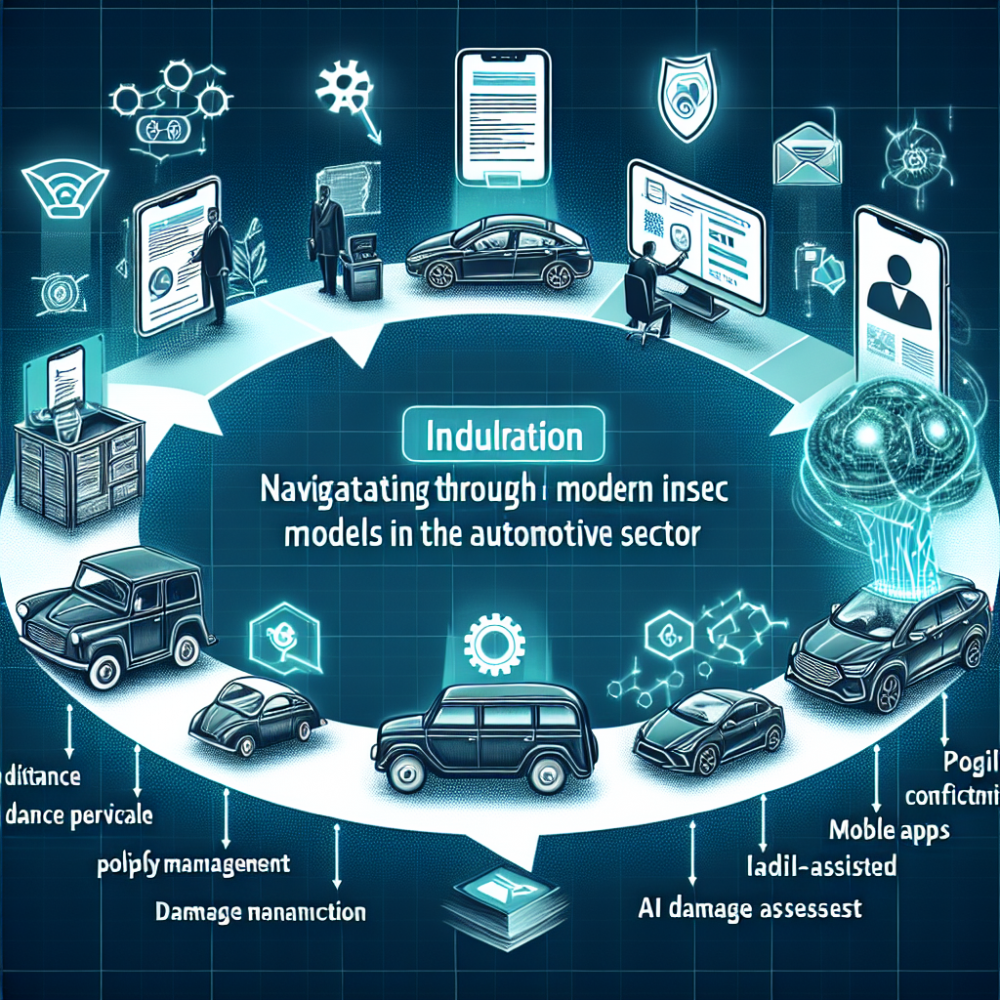Evolutionary Shift: Navigating Through Modern Insurance Models in the Automotive Sector

Posted on: Saturday, March 2nd, 2024
The automotive insurance sector is witnessing a transformation, influenced by technological advancements, regulatory changes, and shifts in consumer behavior. These changes are fostering the development of innovative insurance models designed to cater to the evolving needs of vehicle owners around the globe. From the adoption of telematics to the integration of artificial intelligence and data analytics, insurance companies are revolutionizing the way policies are priced, offered, and managed. This shift not only promotes a more personalized insurance experience but also heralds a new era of efficiency and customer satisfaction within the industry.
1. Usage-Based Insurance (UBI): At the forefront of modern insurance trends is Usage-Based Insurance. UBI utilizes telematics technology to monitor driver behavior and vehicle use, allowing insurers to tailor premiums based on actual driving patterns rather than historical demographic data. This model encourages safer driving habits while potentially lowering costs for conscientious drivers.
2. Telematics and Real-Time Data: Beyond UBI, telematics is revolutionizing the industry by providing real-time data on vehicle health, which insurers can use for more accurate risk assessment and proactive maintenance notifications. This real-time approach reduces the likelihood of major vehicle malfunctions and accidents, benefiting both the insurer and the insured.
3. AI-Powered Chatbots for Customer Service: Artificial intelligence, especially in the form of chatbots, is improving customer service operations. Insurers are adopting AI to handle claims, answer policy questions, and provide personalized policy recommendations, making insurance more accessible and reducing operational costs.
4. Blockchain for Fraud Detection and Risk Management: Blockchain technology is being explored as a tool for enhancing transparency, improving the processing of claims, and significantly reducing fraud. By enabling a decentralized record-keeping system, insurers can streamline operations and offer more secure transactions.
5. On-Demand Insurance: Reflecting the gig economy, on-demand insurance allows drivers to be insured on a per-use or short-term basis. This model suits occasional drivers and provides flexible coverage options that reflect modern driving habits.
6. Peer-to-Peer (P2P) Insurance: P2P insurance models leverage collective risk pooling where individuals unite to insure against similar risks. This approach can lead to lower premiums and a more community-oriented insurance service.
7. Customizable Policies: Driven by data analytics, insurers are now offering customized policies that are precisely tailored to the needs of an individual driver. This level of customization is setting a new standard in personalization within the insurance industry.
8. Advanced Analytics for Risk Assessment: Big data and advanced analytics are playing a crucial role in risk assessment, enabling insurers to predict risks more accurately and price policies more effectively. This trend is leading to more refined insurance models that can adapt to individual risk factors.
9. Cybersecurity Insurance for Connected Cars: With the rise of connected vehicles, cybersecurity has become a significant concern. Insurers are responding by offering dedicated cybersecurity insurance policies to protect against hacking and data breaches, ensuring peace of mind for digitally connected drivers.
10. Regulatory Technology (RegTech) for Compliance: As the regulatory environment becomes more complex, insurance companies are turning to RegTech solutions to help navigate the legal landscape. This includes employing technology to ensure compliance with global insurance regulations, thereby safeguarding both the insurer and the policyholders.
The landscape of car insurance is dynamically evolving, reflecting broader technological and societal shifts. These emerging models promise to make insurance more tailored, efficient, and responsive to the needs of the modern consumer, setting a new benchmark in the industry. As we look to the future, it's clear that the integration of technology and innovative insurance models will continue to play a pivotal role in shaping the car insurance sector.